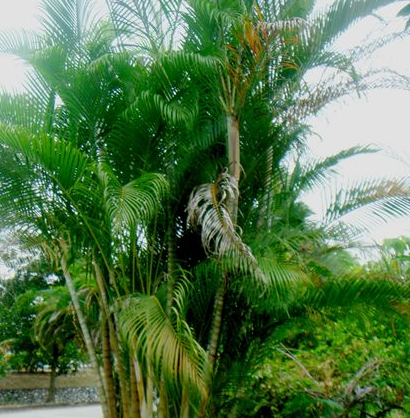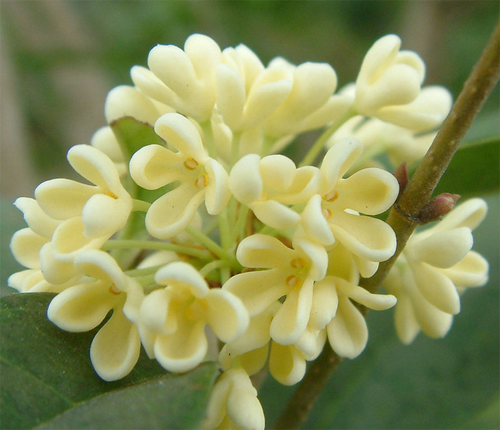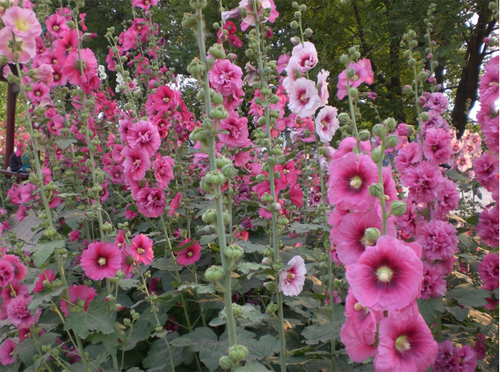Culture methods and matters needing attention price and alias of loose-tailed sunflower
Loose-tailed sunflower is in many people like breeding, which can be cultured indoors, can purify the air, but also grow more good-looking, what are the breeding methods and matters needing attention? What is the price of sunflower? What other aliases do you have?

Culture methods and points for attention of loose-tailed sunflower:
Like warm, humid, semi-overcast and well-ventilated environment, the lowest winter temperature should be above 10 ℃. During the growing season, the soil must be kept moist and the air around the plant should be kept humid.
Loose-tailed sunflower is afraid of cold and weak in cold tolerance. Outdoor cultivation in northern China generally enters the house from late September to early October and must be placed in a place with sufficient sunshine. The room temperature during the overwintering period is 23: 25 ℃ during the day and 15 ℃ at night, at least 8 ℃ or more, otherwise it will suffer frost injury and cause death in winter and spring.
During the overwintering period, we should also pay attention to scrubbing the leaf surface or spraying a small amount of water to the leaf surface to keep the leaf surface clean.
Sunflower is a tropical plant. Like warm, humid, semi-overcast environment. The cold tolerance is not strong, the leaves turn yellow when the temperature is below 20 ℃, the lowest temperature for overwintering is above 10 ℃, and about 5 ℃ will freeze to death. Suitable for loose, well-drained and fertile soil. Thick branches and leaves, evergreen all the year round, strong shade tolerance. Young trees are potted for interior decoration.
1. Disinfection in pots
Soak the split plant in 1500 times chlorothalonil solution for five minutes, then take out the cold dry, and then serve. You can also irrigate the root with chlorothalonil immediately after potting.
Management after ramet: put the ramet into the basin and irrigate the root or irrigate once. Because its root system is greatly damaged and its water absorption capacity is very weak, it takes about 3-4 weeks to recover the new root germination.
Watering should be controlled within 3-4 weeks after ramet, so as not to rot the root, but the transpiration of its leaves is not affected. In order to maintain the water balance of the leaves, do not fertilize the leaves once or three times a day. After the split, but also pay attention to the sun is too strong, it is best to put in the shade to maintain.
2. Potting or transplanting
When the seedlings are installed in the basin, the thick coarse-grained substrate of 2~3cm is first put into the basin bottom as the filter layer, and then sprinkled with a fully mature organic fertilizer as the base fertilizer, with a thickness of about 1~2cm, then covered with a thin layer of matrix, about 1~2cm thick, and then put into the plant to separate the fertilizer from the root system and avoid root burning.
3. You can choose one of the following substrates for potting: vegetable garden soil: slag = 3VR 1; or garden soil: medium coarse river sand: sawdust (slag) = 4:1:2
When transplanting the seedlings, first dig the planting hole, sprinkle a layer of organic fertilizer at the bottom of the planting hole as the base fertilizer (base fertilizer), the thickness is about 4~6cm, and then cover a layer of soil and put into the seedlings, in order to separate the fertilizer from the root system and avoid root burning. After putting it into the seedling, backfill the soil, cover the root system, and trample the soil with your feet and water it once.
4. Humidity
Like the humid climate, the relative temperature of the air in the growing environment is 70-80%, and the relative humidity of the air is too low, which will dry up the leaf tip. 5. Temperature
Because it originated in the tropics and likes high temperature environment, it has strict requirements on winter temperature. When it is lower than 10 ℃, it grows slowly and begins to enter semi-dormancy or dormancy; when it is less than 5 ℃, it can not safely survive the winter; in summer, it can be tolerated when the temperature is above 35 ℃, but the growth will be temporarily hindered. The most suitable growth temperature is 18-30 ℃.
6. Lighting
Light requirements are not strict, like plenty of sunshine, but also resistant to half-shade, but grow better when there is enough light.
7. Pruning
Winter pruning, in winter plants enter dormancy or semi-dormant period, to thin, disease and insect pests, withered, too dense and other branches.
8. Turn the basin
As long as it is properly maintained, it will grow very fast, and when it grows to a certain size, we should consider changing it to a larger basin so that it can continue to grow vigorously.
The culture soil and composition ratio for basin change can be chosen as follows: vegetable garden soil: slag = 3:1; orchard soil: medium coarse river sand: sawdust = 4; or one of paddy soil, pond mud, and rotten leaf soil.
9. Take off the basin
Put the flowers that want to change the pot on the ground, first pat the four sides of the basin with a slap, so that the root system is shaken and separated from the basin wall, put the flowerpot upside down on the left hand, gently clamp the plant with the index finger and middle finger of the left hand, hold the edge of the basin with the wrist and fingertip, hit the bottom of the basin with the right hand, and then use the mother finger to top the root soil down from the bottom hole to let the plant come off. After taking it off, gently pat the basin soil with both palms to let the excess soil fall off.
Choose a flowerpot of appropriate size, the bottom hole of the pot is covered with two tiles or thin foam, and then put a layer of ceramsite or broken red brick on the tile or foam, which is about 2~3cm thick.
Note:
Indoor potted sunflower should choose acidic soil, and sandy loam with high humus content should be selected in the north. Watering should follow the principle of "dry and wet" according to the season, more watering should be appropriate in the dry and hot season, and watering should be controlled in low temperature, overcast and rain.
Loose-tailed sunflower is afraid of cold and strong light exposure to avoid burning leaves. Loose-tailed sunflower prefers a semi-overcast environment, and about 50% of the sun should be covered in spring, summer and autumn. The suitable temperature for growth is 20-25 ℃. The temperature should be above 15 ℃ at night in winter and about 25 ℃ in daytime. If it is less than 5 ℃ for a long time, it is bound to suffer frost injury or even death. In the growing season, it is necessary to keep the basin soil moist and the high air humidity around the plant. Keep the leaf surface clean in winter, but often spray a small amount of water or scrub the leaf surface.
An alias for sunflower
Loose-tailed sunflower, also known as yellow coconut, is a tufted evergreen shrub or small tree. The stem is smooth, yellowish green, without burr, covered with wax powder when tender, with obvious leaf marks, showing ring shape.
Price of sunflower:
This mainly has a lot to do with the size of sunflower, 180 centimeters to sell 165 yuan, the specific need to consult the relevant sales, different local prices are not the same.
Culture methods and matters needing attention of loose-tailed sunflower, Phoenix-tailed bamboo and yellow coconut
Alias: loose-tailed sunflower, Phoenix tail bamboo, yellow coconut family genus: Palm family loose-tailed sunflower florescence: summer flower language: beautiful and moving use tips: family maintenance, large-scale public places maintenance. Home display: suitable for display in the hall, bedroom, study and other places. Basic maintenance management
Light
Like plenty of sunshine, afraid of strong light exposure.
Temperature
The suitable temperature for growth is 20-30 ℃.
Soil
It is suitable to grow in loose, fertile and well-drained sandy soil. Potted soil can be prepared with garden soil, rotten leaf soil and river sand at the ratio of 6:2:2, with a small amount of base fertilizer before planting.
Watering
Potted loose-tailed sunflower should be given sufficient water in the growing season and often keep the potted soil moist. In hot summer, you should often spray water on the leaves to increase air humidity and keep the leaves green and bright. When the temperature is low in autumn and winter, the basin soil is moist and dry.
Fertilizer application
During the growing season from May to September, rarefied liquid fertilizer was applied once or twice a month. The base fertilizer can be applied once in combination with changing pots in spring.
Cultivation techniques, habits, culture and prevention of diseases and insect pests of loose-tailed sunflower, family and genus: Palm, loose-tailed sunflower alias: yellow coconut is native to Madagascar in Africa. (1) morphological characteristics: evergreen shrubs or small trees. The plant is 3-8 meters high, clustered, with more tillers at the base. The stem is smooth, yellowish green, with obvious leaf scars, like bamboo knots. Pinnately compound, smooth and slender, petiole tail slightly curved, bright green. Leaflets linear or lanceolate, ca. 30 cm long and 1 cm wide. The fruit is purple and black. The common ornamental species of the same genus are C.cabadae, which is 10 meters high, the stem is slender, the base is expanded, the leaves are arranged alternately, the leaflets are slender, bright green, and the fruit is small and red.
(2) habits: like warm, humid and semi-overcast environment. Afraid of cold, afraid of strong light exposure, the requirements of the soil are not strict, but it is appropriate to loose and humus-rich soil. (3) cultivation management: sunflower is afraid of cold and strong light exposure to avoid burning leaves. Loose-tailed sunflower prefers a semi-overcast environment, and about 50% of the sun should be covered in spring, summer and autumn. The suitable temperature for growth is 20-25 ℃. The temperature should be above 15 ℃ at night in winter and about 25 ℃ in daytime. If it is less than 5 ℃ for a long time, it is bound to suffer frost injury or even death. In the growing season, it is necessary to keep the basin soil moist and the high air humidity around the plant. Keep the leaf surface clean in winter, but often spray a small amount of water or scrub the leaf surface. Fertilize once or twice a month during the growing season. The requirement of soil is not strict, but it is suitable to be loose and rich in humus. Potted sunflower can be prepared with rotten leaf soil, peat soil plus 1 to 3 river sand or perlite and base fertilizer to prepare culture soil. Change the basin every 2 ~ 3 years in spring and apply base fertilizer. When changing pots, the withered branches and leaves should be removed, and the overdense clumps should be cut off according to the growth situation, so as to facilitate the germination of the clumps and maintain a beautiful potted posture. (4) Culture: both sowing and ramet are OK, but the ramet method is commonly used. In spring, the plants with more tillers were cut into 2-3 plants with a sharp knife, which were directly potted and cured at the temperature of 20-25 ℃. Generally, it can become a potted commodity after 1-2 years of maintenance. For those who can obtain seeds, wash the pulp of the harvested fruit, soak the seeds in 35 ℃ warm water for two days and sow them. Transplant as it germinates. Spray more foliar water on a sunny day. Generally speaking, the growth is slow in infancy and rapid in adulthood. (5) Diseases and insect pests: leaf spot disease, leaf tip and leaf edge are the most vulnerable, resulting in dry curl. At the initial stage of the disease, 50% carbendan wettable powder is sprayed for prevention and control. In addition, it may be harmful to scale insects and can be sprayed with 1500 times of omethoate EC.
- Prev

Can sweet-scented osmanthus culture methods and precautions be raised in the north
Sweet-scented osmanthus blossoms everywhere, is very fragrant, but not pungent, many people like to raise sweet-scented osmanthus, what is the breeding method of sweet-scented osmanthus? What are the precautions? Can you raise it in the north? What should I do if I get cold?
- Next

What is the price of seeds for propagation and pest control of hollyhock
Hollyhock used to grow in Sichuan, just have the name of hollyhock, how does hollyhock breed? If you want to raise a few more plants at home, which diseases and insect pests are easy to encounter in the process of breeding? What is the price of hollyhock seeds? Propagation method of hollyhock: sowing season, sowing after the seeds are mature in August and September
Related
- Fuxing push coffee new agricultural production and marketing class: lack of small-scale processing plants
- Jujube rice field leisure farm deep ploughing Yilan for five years to create a space for organic food and play
- Nongyu Farm-A trial of organic papaya for brave women with advanced technology
- Four points for attention in the prevention and control of diseases and insect pests of edible fungi
- How to add nutrient solution to Edible Fungi
- Is there any good way to control edible fungus mites?
- Open Inoculation Technology of Edible Fungi
- Is there any clever way to use fertilizer for edible fungus in winter?
- What agents are used to kill the pathogens of edible fungi in the mushroom shed?
- Rapid drying of Edible Fungi

